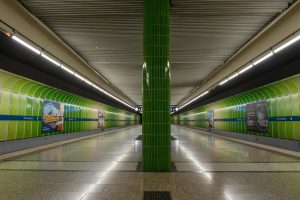Mastering the Art of Sustainable Urban Living
–>
Welcome to the ever-growing urban landscape. With more and more people migrating to cities for better economic prospects and modern amenities, the need for sustainable living in urban areas has become a pressing concern. Urbanization, though a sign of progress, brings along a host of challenges, such as pollution, waste management, and resource depletion. In order to maintain a sustainable balance and ensure a better quality of life, mastering the art of sustainable urban living has become the need of the hour.
The Concept of Sustainable Urban Living
Sustainable urban living is the practice of creating and maintaining a healthy and environmentally-friendly urban lifestyle. It focuses on promoting sustainable practices that minimize the impact of urbanization on the environment, while also catering to the needs of the urban population.
To achieve sustainable urban living, it is crucial to understand the interdependence between humans and the environment. The continuous growth of urbanization has put a strain on the environment, leading to problems like air and water pollution, climate change, and depletion of natural resources. Therefore, shifting towards sustainable urban living is imperative to preserve the planet for future generations.
Mastering the Art of Sustainable Urban Living
1. Implementation of Green Spaces
The concrete jungle of cities is notorious for its lack of greenery. However, with growing awareness, urban planners are now emphasizing the importance of incorporating green spaces into urban design. From parks and gardens to vertical gardens and green rooftops, these spaces not only add aesthetic value but also help in reducing air pollution, providing a habitat for wildlife, and regulating temperature.
2. Efficient Waste Management
Waste management is a crucial aspect of sustainable urban living. The growing population and consumerism have led to an increase in waste generation, leading to overflowing landfills and pollution of land and water bodies. Implementing efficient waste management practices such as segregation, recycling, and composting can significantly reduce the amount of waste that ends up in landfills. Furthermore, incorporating technologies like waste-to-energy plants can also help in harnessing energy from waste.
3. Sustainable Transportation
Transportation is a significant contributor to air pollution and greenhouse gas emissions in urban areas. Sustainable transportation options like bikes and public transport not only reduce carbon footprint but also help in reducing traffic congestion. City planners can also promote walkability and pedestrian-friendly infrastructure, making it easier for people to walk or cycle to their destinations.
4. Energy-efficient Buildings
Buildings are a significant source of energy consumption. Green building practices such as using energy-efficient materials, proper insulation, and installation of solar panels can significantly bring down the energy requirements and, in turn, reduce carbon emissions. Furthermore, implementing green building standards and certifications can also help in promoting sustainable urban living.
5. Water Conservation
Water, a finite resource, is becoming increasingly scarce in urban areas. Sustainable water management practices like rainwater harvesting, recycling and reusing greywater, and installing low-flush toilets can help in reducing water consumption. Additionally, educating people about water conservation and promoting water-efficient technologies like drip irrigation can go a long way in preserving this precious resource.
The Benefits of Sustainable Urban Living
Mastering the art of sustainable urban living not only helps in preserving the environment but also brings numerous benefits to individuals and communities:
1. Improved Health and Well-being
The focus on creating green spaces, promoting sustainable transportation, and reducing pollution can have a positive impact on people’s physical and mental health. Exposure to green spaces has been linked to reducing stress, increasing physical activity, and improving overall well-being.
2. Economic Benefits
Implementing sustainable urban living practices can also be financially beneficial. For instance, energy-efficient buildings can significantly reduce energy bills, and sustainable transportation options eliminate the need for personal vehicles, thereby reducing maintenance and fuel costs.
3. Resilience to Natural Disasters
Cities that adopt sustainable practices are also better equipped to handle natural disasters. For instance, green infrastructure like rain gardens and green rooftops can help in managing heavy rainfall, while sustainable buildings can withstand earthquakes and strong winds.
The Road Ahead
The concept of sustainable urban living is gaining momentum, and governments, city planners, and individuals are increasingly adopting sustainable practices. However, there is still a long way to go. Creating awareness, proper implementation of policies, and active participation from individuals are crucial in achieving sustainable urban living. By mastering this art, we can create a cleaner, healthier, and more sustainable future for ourselves and the planet.
In conclusion, sustainable urban living is not just a buzzword; it is a way of life that we must embrace to secure a better future for generations to come. With the right knowledge, attitude, and practices, we can truly master the art of sustainable urban living. The time to act is now.











